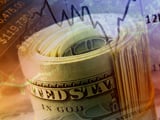 It was almost two years ago that I wrote “Here we go again” about the pending government shutdown. Well, here we go again—again—as a shutdown looks increasingly likely.
It was almost two years ago that I wrote “Here we go again” about the pending government shutdown. Well, here we go again—again—as a shutdown looks increasingly likely.
Where are we today?
Here’s a quick summary of the current situation:
- The country has reached its borrowing limit—we actually hit it last spring—and the Treasury Department has been using the “usual emergency measures” to pay the bills.
- Congress is facing off over whether to raise the debt limit while also addressing other headline issues, which this time include arguments to defund Planned Parenthood.
- Although congressional leaders say they are committed to not shutting down the government, there are some internal “rebels” who are determined to use their leverage for other political purposes.
In other words, we are right back to 2013.
Since a government shutdown happened once, it can certainly happen again. And, as I said, it does look likely. Unfortunately, I think it will probably be worse this time, since the political environment has deteriorated in many ways in the past couple of years. Add the fact that the presidential primaries are now under way, with several of the players (Ted Cruz comes to mind) likely to take advantage of the situation to generate headlines, and this go-round could actually be even longer and more damaging than the last one.
What are the potential ramifications of a shutdown?
For the economy. As was the case two years ago, the direct economic damage from a shutdown should be limited. Government spending will certainly decline, and spending from government employees who don’t get paid will decline as well. I’d say a reasonable estimate of direct economic damage would be around 0.25 percent of GDP per week for as long as the shutdown persists. It’s not nothing, but it’s not the end of the world either. It’s also probably not enough economic damage to force Congress into an agreement.
The real danger, though, comes when the “usual emergency measures” expire and the U.S. cannot pay its bills. The best estimate for this date is toward the end of the year. This is the point where the very real economic damage should be enough to force an agreement. That said, with a shutdown already pending, it could last quite some time before the government is forced to reach an agreement. Again, it seems quite possible that this time could be worse than last.
For the markets. Although the economic impact would probably be limited, a more immediate question is what this might mean for the stock market. As I wrote earlier, confidence has taken a very serious hit in the wake of the Chinese market crash, devaluation of the yuan, and other geopolitical problems. The Fed’s recent decision to leave rates unchanged has not helped, and we are seeing a market bouncing around trying to decide where to go next. A government shutdown would be another major hit to investor confidence, and it could conceivably be what pushes us into a real correction. It’s not a certainty, but it’s something to watch out for.
I don’t want to overstate the risks here—and, as I have noted, the real economic risks are not severe—but I do think that piling this kind of political uncertainty on top of the existing economic and financial risks around the world is bound to have a negative effect on markets. Investors should expect more volatility and plan ahead for it.
That said, just as in 2013, the longer-term effects of a shutdown are likely to be minimal. The U.S. remains solvent, with a growing economy, and any decision not to pay the bills would be a political one. In fact, a government shutdown has been a political endgame for the responsible party every time, so there is real incentive not to go there. Still, we cannot assume the government is smart—so let’s make sure we’re ready for the worst.


 Print
Print



